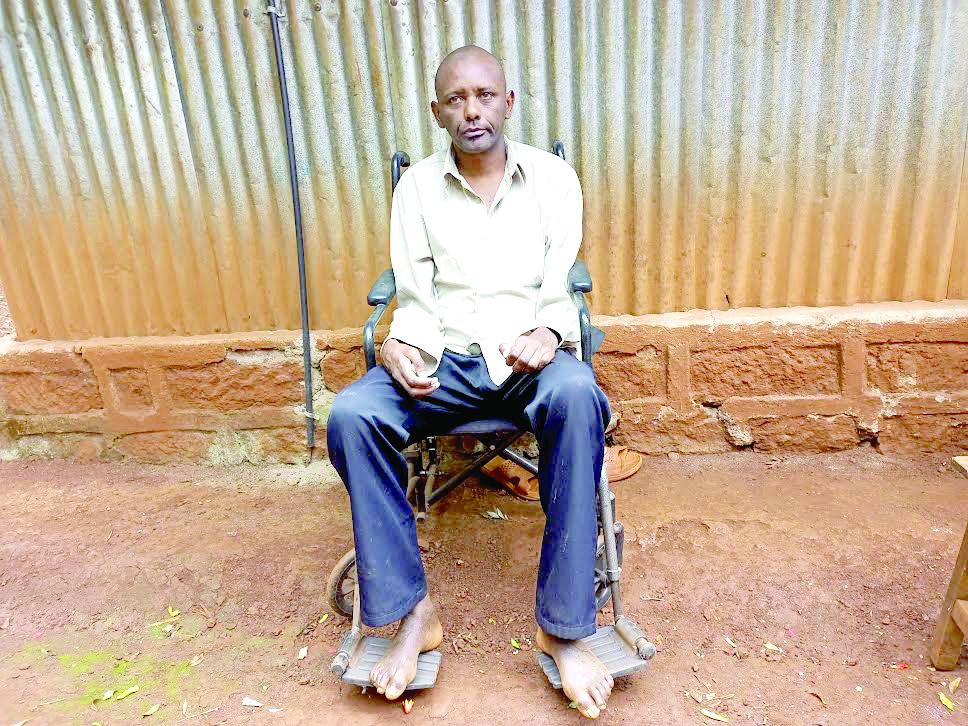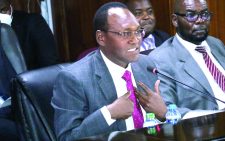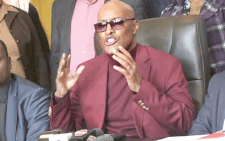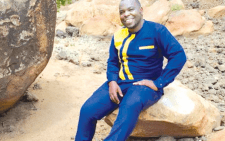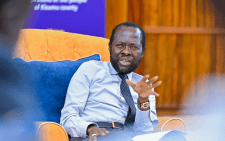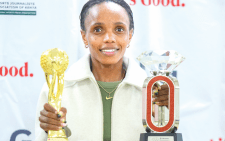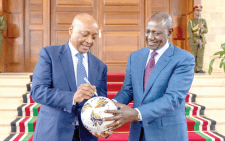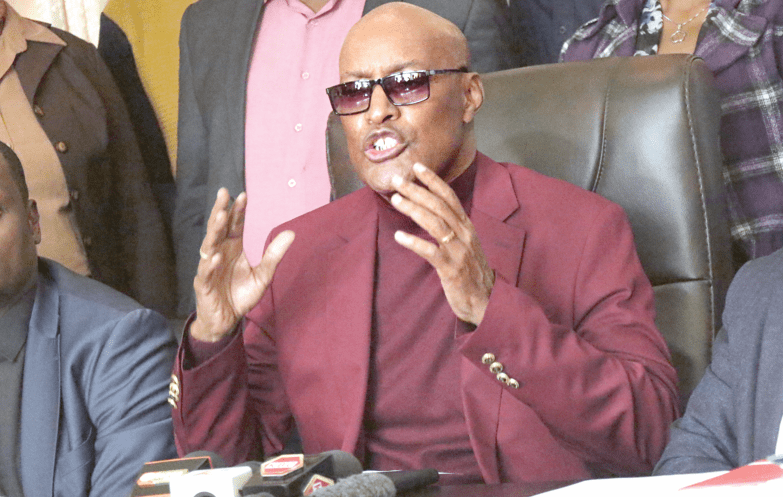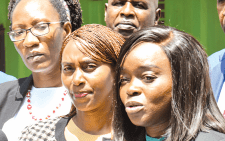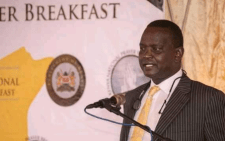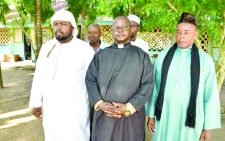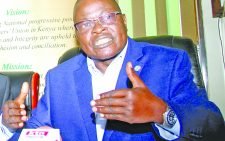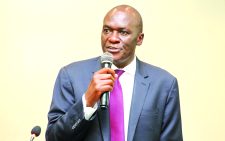Thomas Ngure was born in good health and enjoyed his childhood just like other children until he was 11 years old, and life took a different twist.
Ngure started experiencing numbness on his back and hands that his legs became so weak he could not walk steadily. In a span of three weeks, he was confined in bed after being hit by paralysis.
His parents sought medical attention from various hospitals, but the medics could not get a diagnosis. He was only given drugs to relieve the numbness, which never worked.
This forced him to cut short his education while in Class Five because he could not walk or do anything with his hands.
For three years, (1989 to 1991) Ngure was confined to a wheel chair, but in 1992, he ‘miraculously’ recovered from the paralysis and was able to walk again.
Second paralysis hits
It took him one year to gain his stability and in 1993 he could run, jump and even play football.
Having been out of school for four years, Ngure opted to leave his home in Gathundu Village, Kiharu Constituency, Murang’a County to travel to Nairobi to do business, but he could only work for three years, up until 1997 when the paralysis struck again.
“I started feeling numb at the back, my hands were gradually losing their grip and I could not walk steadily,” he recounts.
Efforts by medics to resolve this mystery were futile and for the second time, Ngure was forced to go back to his rural home and was confined to a wheelchair for another three years .
“I had several scans done on my spine; the medics took a sample of the spine fluid, which was taken to the laboratory for tests, but still the results didn’t reveal any illness,” he said.
“The doctors concluded that this condition might have emanated from a family issue and we were told to go consult with other family members to see if they could find a solution,” he added.
In 2000, he recovered again and decided to go back to Nairobi to start a business in order to be able to earn a living for himself.
As if two times were not enough, the paralysis struck again in 2004 and as usual he would go back home. He said this time the condition worsened as he could not even turn in bed. He had to be assisted.
Losing sight
In 2007, he lost his sight and he was required to raise Sh500,000 for a cornea transplant. The family managed to raise Sh250,000 and had the operation done on one eye.
After 10 years of being confined to a wheelchair, he started recovering and was able to do a few things, such as washing and cooking on his own.
In 2016, he went back to Nairobi to look for casual jobs, worked for three years before the paralysis struck him for the fourth time in 2018. To date Ngure is still confined to a wheelchair and relies on his aging mother to feed and bathe him.
No solution in sight
The 42-year-old Ngure says the condition dimmed his dream to become a businessman, which was his childhood dream.
He, however, says he is hopeful that one day he shall recover and get back to his normal life, have a family and run a business.
His mother Bilha Wanjiru said her son’s condition has been challenging to the family because it seems to have no cure.
What shocked her is that Ngure was born a healthy child and she does not understand what caused the paralysis.
“We spent a lot of money seeking medical care, but still got no answer to his condition” she said.
The mother says Ngure depends on her for all his needs and she is not even able to leave the house in search of casual jobs, because there is no one to take care of him.
She says the various specialists who attended to Ngure, in various hospitals in his county and surrounding counties found it challenging to pinpoint exactly what could be ailing him.
Medical specialists say thta some of the common conditions recorded in Kenya albeit informally are multiple sclerosis, muscular dystrophy, narcolepsy and myasthenia gravis.
However, since Kenya doesn’t have a national registry as yet) for rare diseases, it is not possible to give demographics and the most affected areas.
Dr James Kahura a physician says Ngure’s condition displays symptoms of Multiple Sclerosis (MS), an auto immune disease where the body’s immune system attacks the protective covering of the nerves called myelin.
Electrical impulses
He says our immune systems are responsible for protecting our bodies from infection. In multiple sclerosis, something triggers the immune system to attack the central nervous system. This attack produces inflammation and damages or destroys myelin, a fatty substance that surrounds and insulates axons (or nerve fibers) much as insulation does an electrical wire.
Kahura says when the nerves are damaged in this way, they are unable to send the electrical impulses to and from the brain thus causing impaired coordination to other parts of the body.
The doctor says the symptoms may be mild or severe, short lived or long lasting and different combination depending on the area of the nervous system that has been affected.
Some of the symptoms, include numbness or weakness in one or more limbs, unsteady gait or inability to walk, partial or complete loss of vision, slurred speech, prolonged double vision, fatigue, cognitive problems, mood disturbances, among others.
The physician says the patient might have relapsing attacks, which can last from hours, days, months up to a year or more.
These, he says are exactly the symptoms described in Ngure’s case.
He says though the symptoms might be as a result of another condition, a thorough diagnosis by a neurologist will help single out multiple sclerosis. Magnetic Resonance Imaging (MRI), blood test, evoked potentials and cerebral spinal fluid analysis are also used to identify the condition.
Some of the possible causes of multiple sclerosis, include autoimmune disorders, infectious agents, such as viruses, environmental and genetic factors.
Kahura says, currently there is no cure for multiple sclerosis, but a number of treatments can help manage the condition and ease the symptoms.
“The patient is given immunosuppressants to help keep the immune system and put the condition in remission, so that they don’t show signs of the disease” he said.
“Drugs for the nerves and pain killers are administered to ease the pain. Support care (physiotherapy) is also recommended for those who have difficulty in walking or moving their hands” he added.
The medic agrees that people with rare diseases are, especially likely to go undiagnosed or misdiagnosed. Rare diseases are often genetic conditions and not on a doctor’s radar.
According to the World Economic Forum, 40 per cent of patients with a rare disease received more than one wrong diagnosis before the actual cause was found.
In Kenya, families with rare illnesses, such as Ngure’s face extraordinary challenges. Some of the challenges, include lack of medical knowledge, misdiagnosis and delayed diagnosis. Other obstacles to identifying a disease, include unnecessary treatments and surgeries, social isolation, financial difficulties as well as lack of options for treatment.
Kenya, a member state of the United Nations (UN) is set to benefit from the recent adoption of the UN General Assembly first-ever Resolution on ‘Addressing the challenges of persons living with a rare disease and their families.
Rare Disorders Kenya (RDK) was part of the advocacy campaign that saw rare disease civil society groups in the world call on the UN to address the specific challenges that people living with dare diseases face, develop policies that promote the full participation and inclusion of those people in society, and protect the human rights of all people.
Limited resources
In a country where accessing affordable health care is almost a far-fetched dream for many, those with rare conditions find themselves in an even worse situation, fighting against not just the disease, but also systematic and societal odds.
Christine Mutena, co-founder of RDK explains that the biggest hurdle to undiagnosis in Kenya is limited resources and the lack of knowledge that rare diseases exist, which makes the awareness process difficult and expensive.
She says at the moment, Kenya does not have an official definition of what constitutes a rare disease or a formal rare disease registry and as such the lack of data on the prevalence and history of the diseases limits or prevents informed targeting of resources towards the illnesses.
The Ministry of Health recently created a Technical Working Group on Rare Disorders (TWG-RD) and through this, the organisation is hopefull that the diseases will be given attention. “RDK is part of the TWG and together with the government and other stakeholders we will ensure that no Kenyan suffering from rare diseases is left behind,” she said during a past interview.
“Huge investment in research on the diseases. Also, policies and structures should be in place on top of awareness creation. This will help reduce stigma especially at the grassroots levels,” she said.

